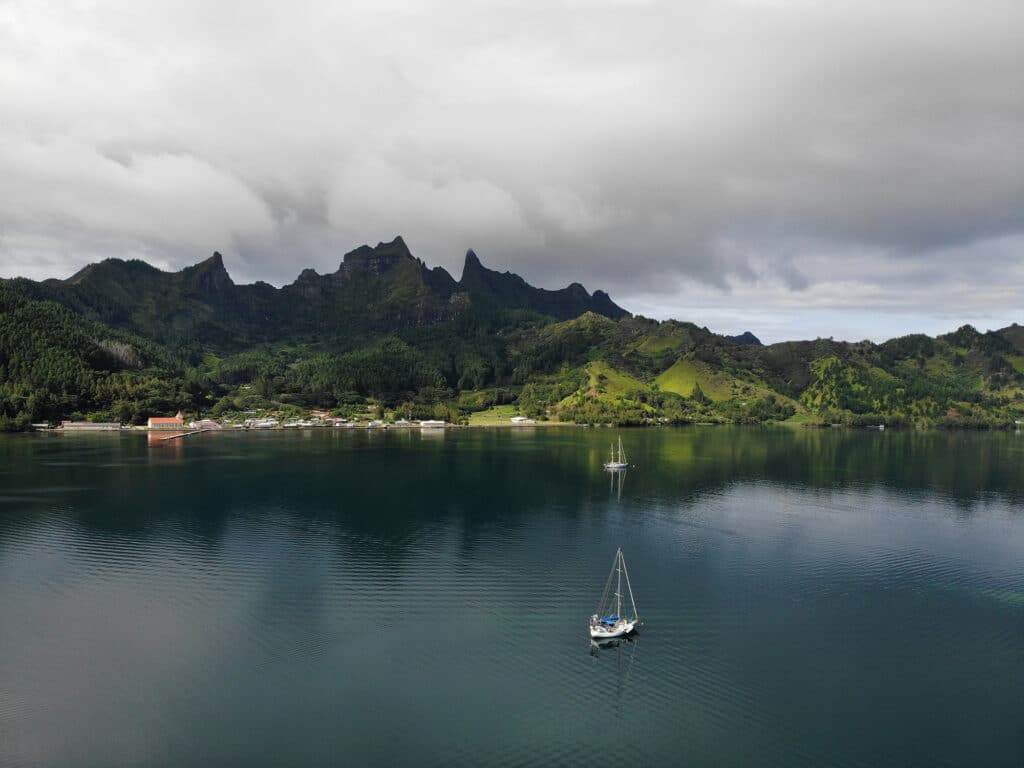
When it comes to securing our boat in an anchorage, we usually prefer setting our own, reliable anchor instead of grabbing a mooring. But in the bay of French Polynesia’s southernmost island, anchoring is a real challenge. The few sailboats that make it to remote, storm-ridden Rapa Iti have the choice of anchoring in 80 to 100 feet of water with bad holding in mud mixed with coral rubble and a good chance to foul the gear, or anchoring shallow in live, fragile staghorn coral.
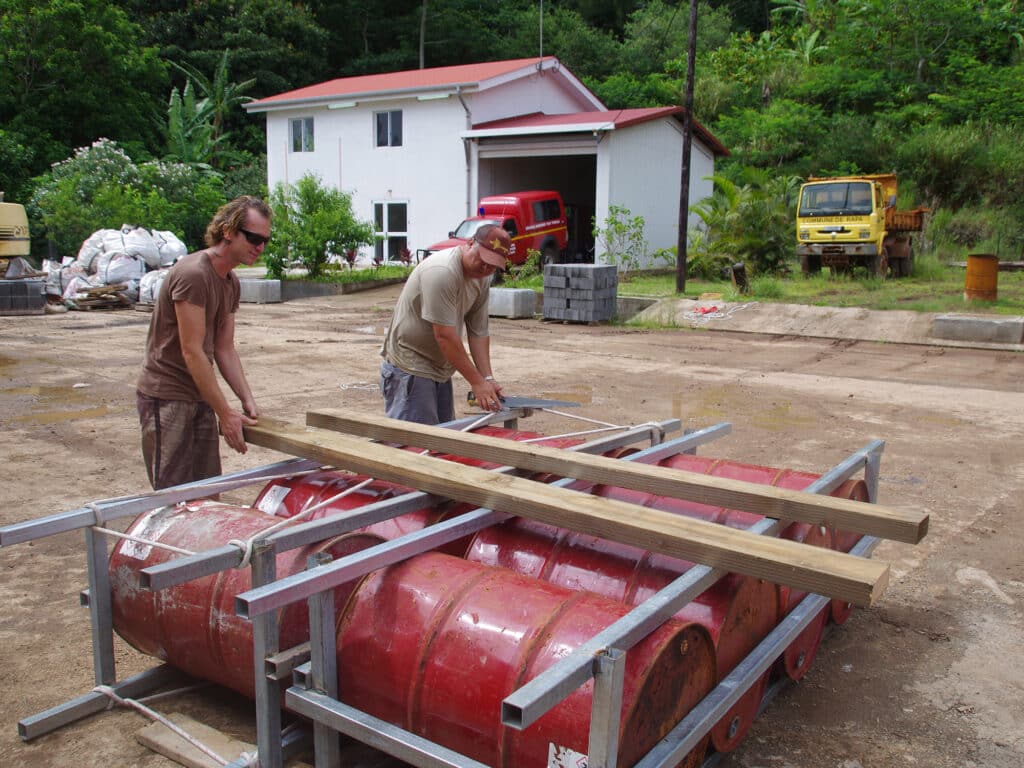
During our three visits to Rapa Iti, we worked with the local community to install two sailboat moorings to protect nature and ensure the safety of visiting cruisers.
Not that many cruisers come here; those who face the challenge of the rough ride are rewarded with more bad weather, but also wonderful nature and Polynesian hospitality. Rapa Iti is a little gem with steep volcanic mountains, sheer cliffs, a wonderfully protected main bay and friendly, welcoming locals. About 500 people live in two villages that stretch out on both sides of the wide, main bay, Ahurei, that reminds me more of an Alpine lake or Norwegian fjord than the South Pacific.
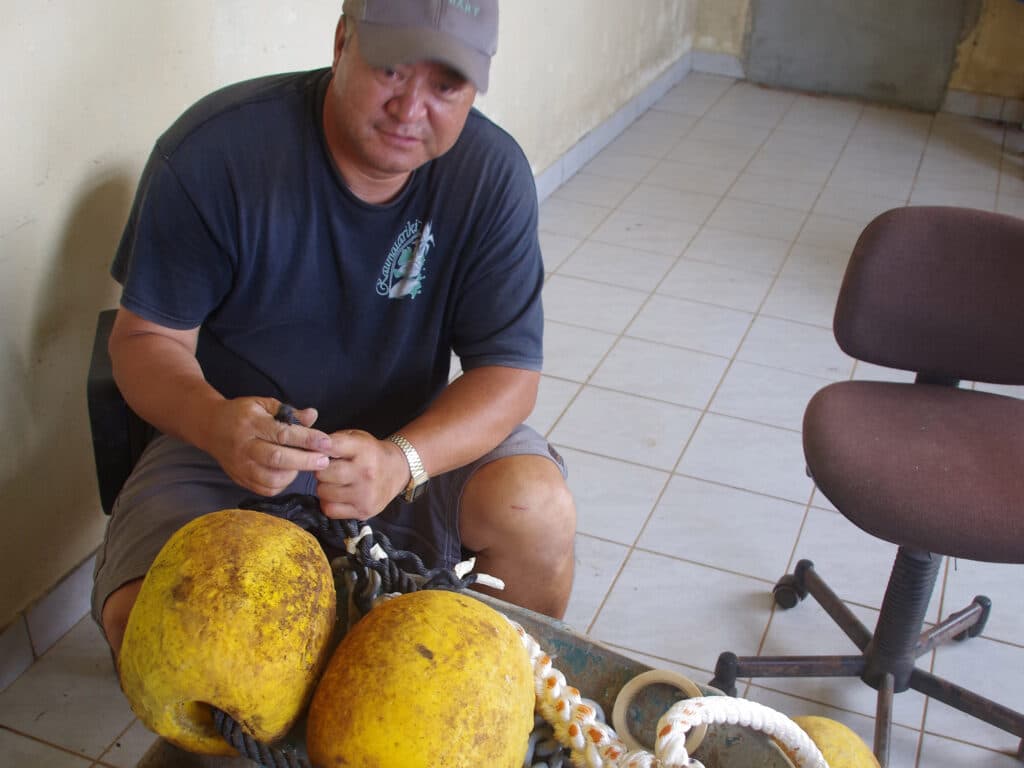
My partner, Christian, and I visited Rapa for the first time in December 2017 on our Sparkman & Stephens 41 Pitufa. We had read that the anchorages had dead coral with bad holding. We anchored in 50 feet of water and were horrified when we dived on our anchor and saw the destruction our chain was doing to the staghorn coral. We usually take care to anchor in sandy spots and float our chain, but that was simply not possible here. That’s why we approached the community with a plan to build a mooring. We had a piece of chain, a rope and some swivels we could donate. We hoped to find the rest ashore.
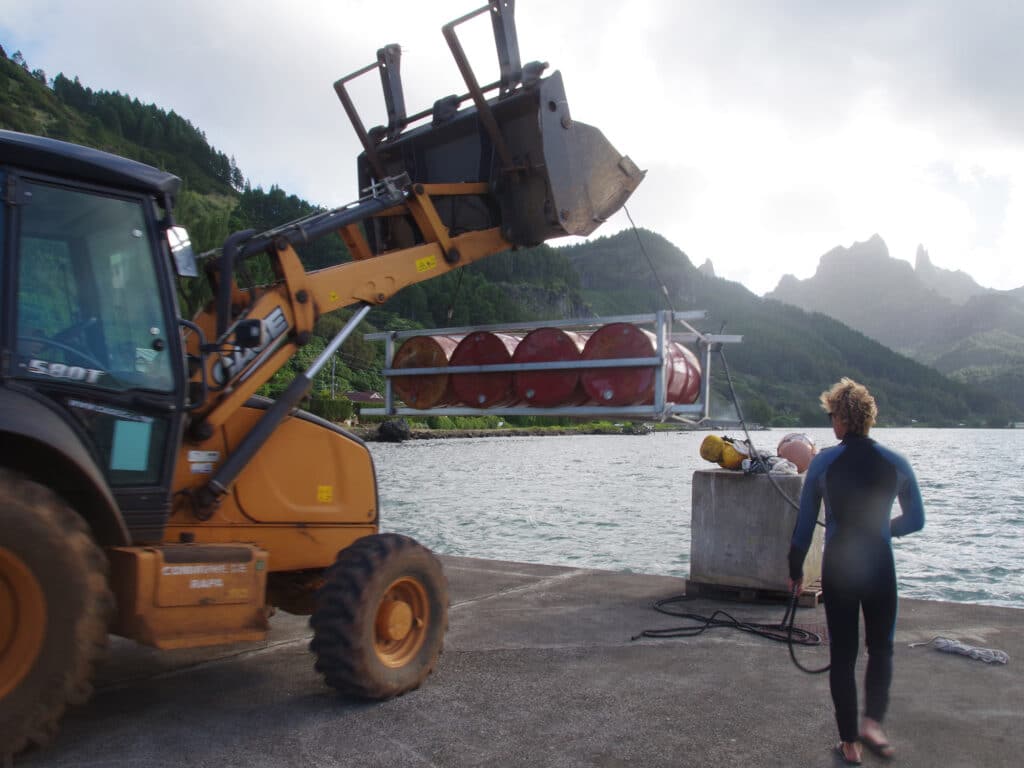
First, we had to persuade the mayor. We went to the post office (the mayor works there as a second job), expecting a long discussion. Much to our surprise, the mayor agreed immediately when he saw our underwater photos, but he didn’t want a temporary solution like we had had in mind. He wanted a sturdy, well-made mooring.
Life on Rapa is still more traditional than in the rest of French Polynesia, and many of the islanders lack formal education, but the people of Rapa are very aware of environmental issues and sustainability. They have a strict rahui, or ban, on fishing on the whole eastern side of the island. The fuel station has a containment basin to prevent contamination of the bay. Trash is separated for recycling, and the smallest kids learn at school how to keep the island clean. Our mooring project matched their mindset nicely.
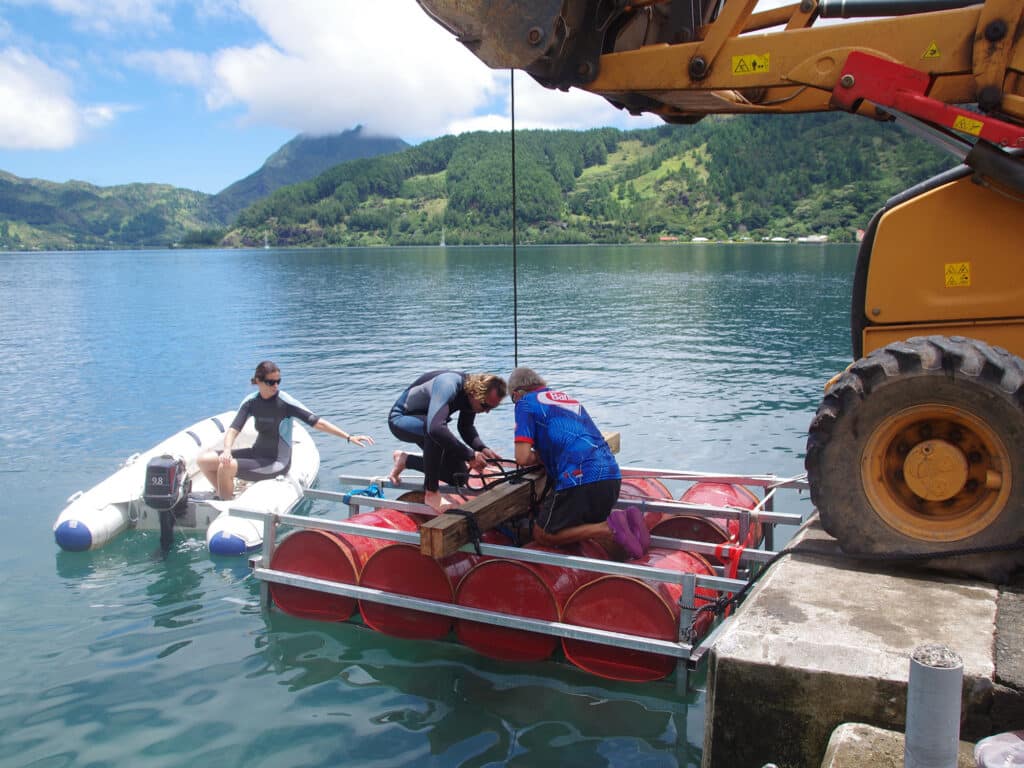
We started brainstorming with a man named Alex, the head of the community workers. None of us had ever installed a mooring, but after some research online, we agreed that a 2.4-ton cement block with extra-sturdy mountings (we cut up a decommissioned digger) would accommodate most visiting boats.
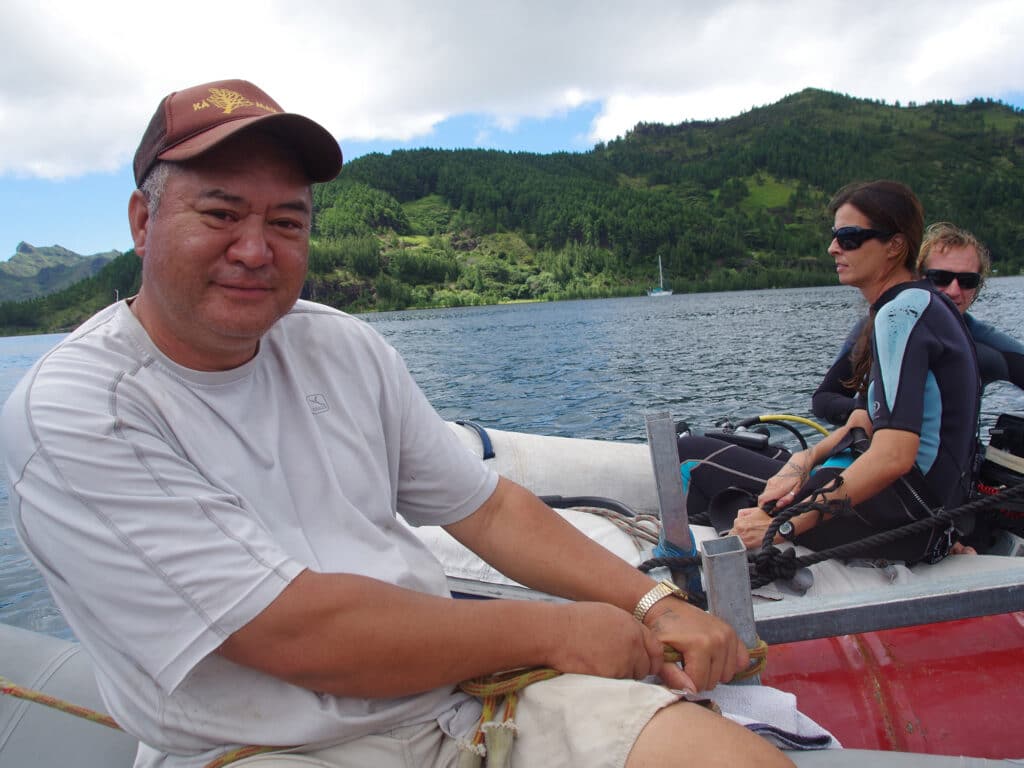
The ordered parts took their sweet time getting delivered from Tahiti, but when we returned to Rapa in December 2018, everything had arrived and the block was ready, too. We assembled the mooring, and then thought about how to transport it more than a mile out in the bay.
Alex got out welding gear, and we built a raft of empty diesel barrels and iron bars. The advantage of this construction was that we could lower it together with the mooring in a controlled way to exactly the spot we had chosen: a hollow on top of a coral head in only 25 feet of water—shallow enough for the islanders (and cruisers) to check and maintain the mooring.
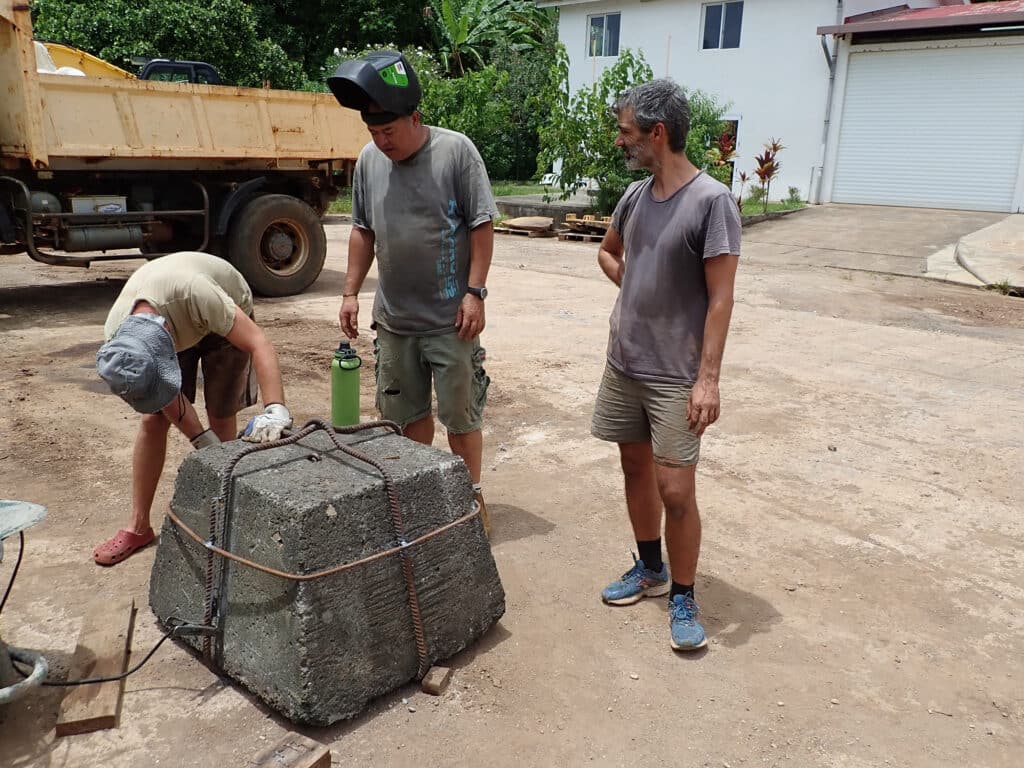
Just after Christmas 2021, we sailed back to Rapa to spend yet another cyclone season on our favorite island. The mooring was still there, numerous sailboats had used it, and the villagers greeted us with friendly smiles—they had not forgotten our labor for the sake of their coral. During our first stroll ashore, the community workers waved us into the maintenance depot with mischievous grins. They had found old mooring blocks that were meant for fish aggregating devices, but were never installed. They weren’t big, but there were two of them. The attachments had rusted off, but couldn’t we make another sailboat mooring out of them?
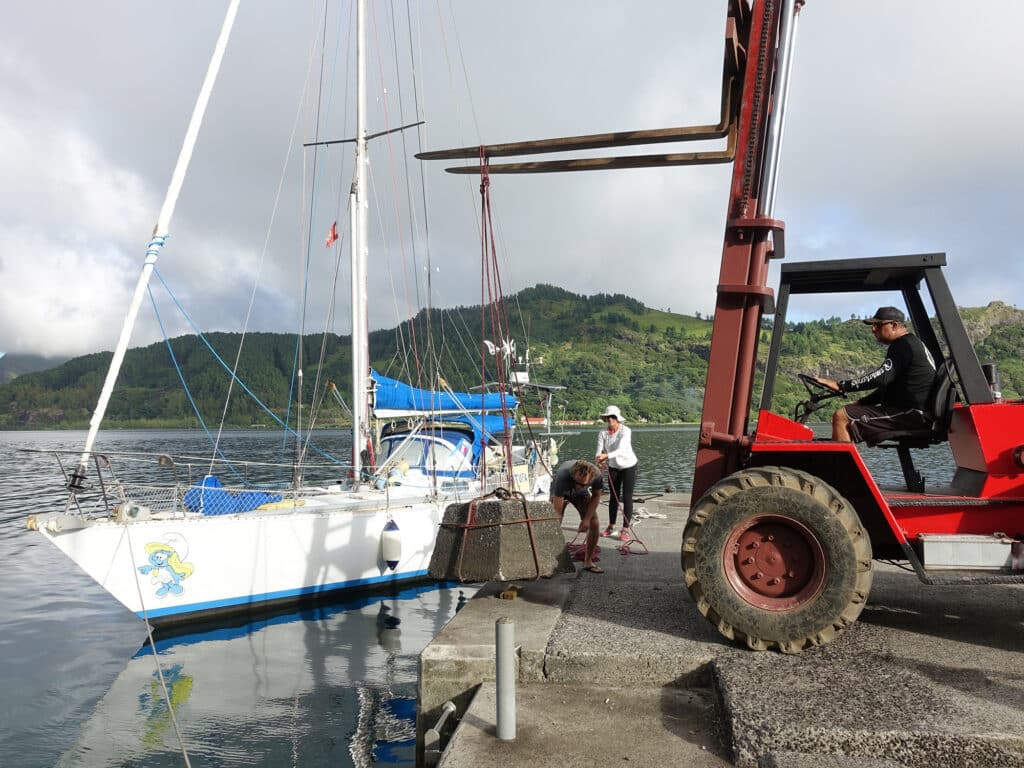
Friends from the sailboat Garulfo arrived soon after, and together, we got cracking, again with Alex supporting the project. We bent rebar “cages” for the two blocks. There was still a piece of chain left from the first mooring, and we and Garulfo’s owners donated missing bits. After some sweaty workdays at the maintenance depot, we were ready to go. Again, we would set the mooring in a shallow spot; tied together, the two blocks would weigh enough to hold a medium-size sailboat.
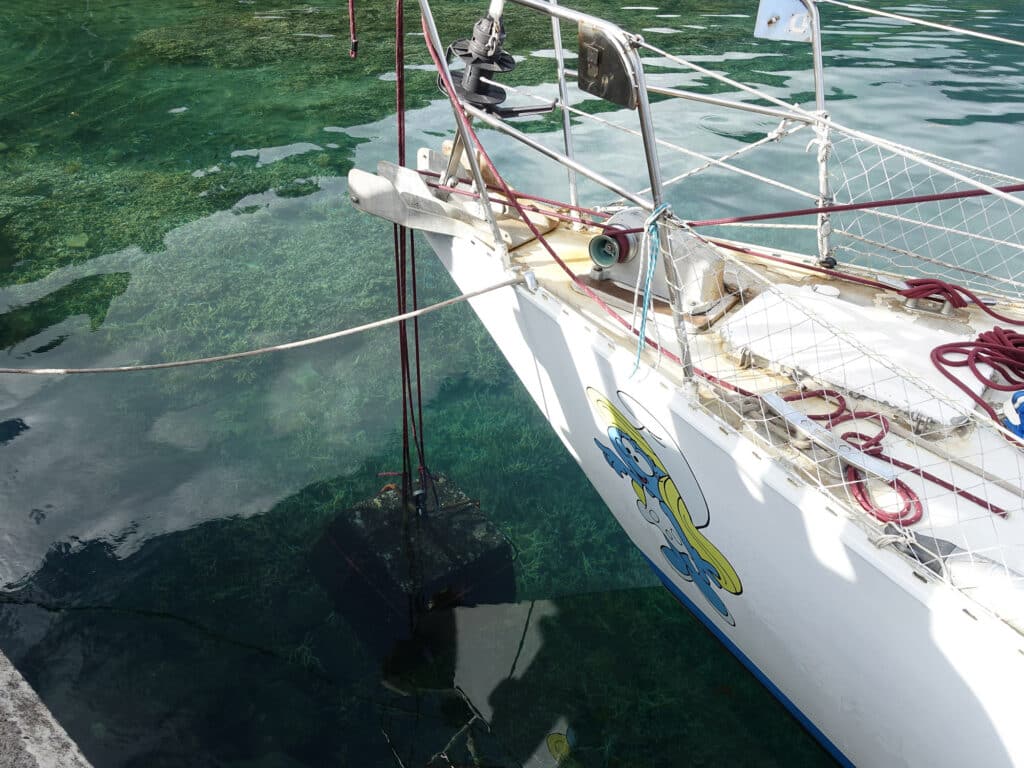
Unfortunately, the raft we had built for the first mooring had been disassembled and used for other purposes, but as we’d be able to transport the blocks separately, we simply went alongside the dock with Pitufa. Alex lowered the block into the water with the digger, we tied it to our bow, and we held our breath as the lines over the bow roller took the weight with a creak. Sturdy little Pitufa hardly bowed with the 1,600 pounds dangling from its nose.
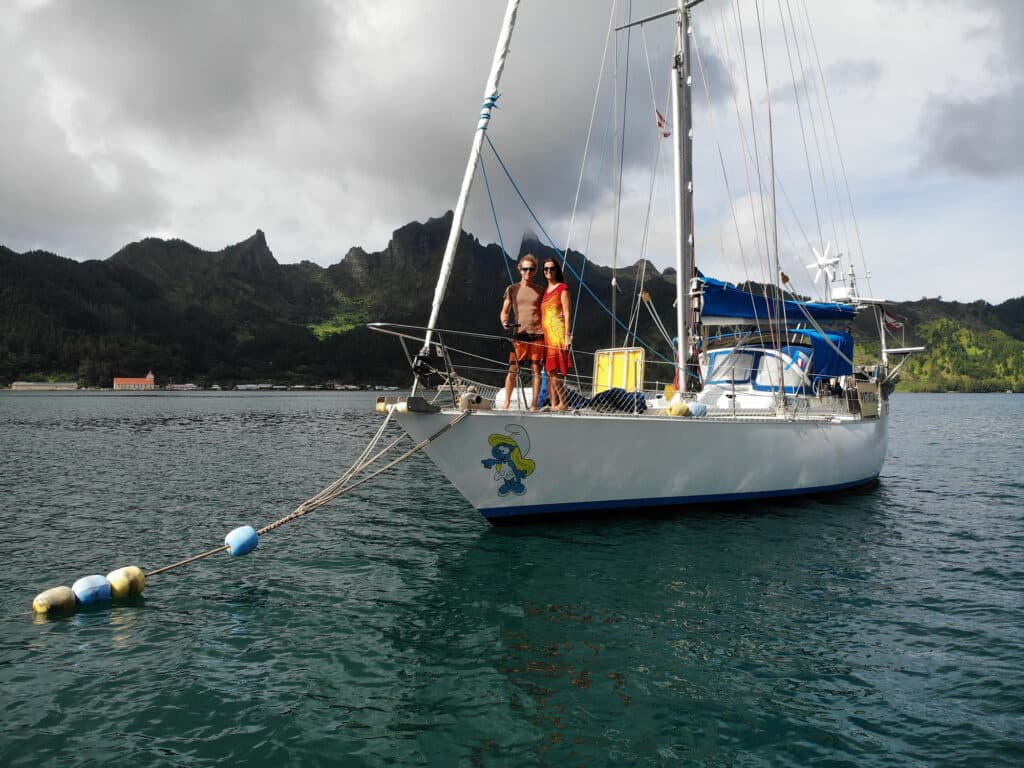
We moved slowly across the bay, and then lowered the first block over the bow roller to the chosen spot with divers to guide us. Back with the second block, we tied the two together with chain, added a strong line and floats, and voilà: second mooring made.
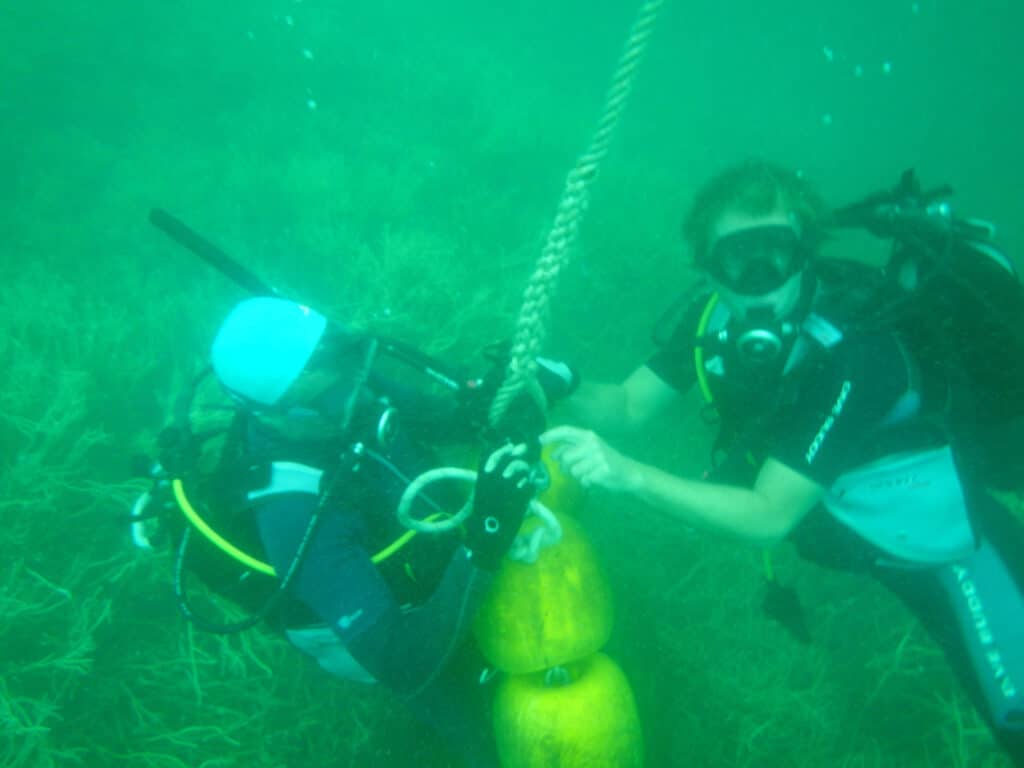
Moorings Location and Specs
Mooring 1 is suitable for boats up to 25 tons. It is a 2.4-ton weight with oversized chain, shackles and rope. It’s located at S 27° 36,808′ W 144° 20,034′.
Mooring 2 is recommended for boats up to 15 tons. It consists of two 1,600-pound blocks linked with 14 mm chain and a 25 mm rope. It is located at S 27° 36,700′ W 144° 19,872′.
Birgit and Christian have been cruising on their Sparkman & Stephens 41 Pitufa for 12 years from the Mediterranean via the Atlantic and Caribbean to the South Pacific. Visit their blog www.pitufa.at for information. Their book Sailing Towards the Horizon is available on Amazon.








